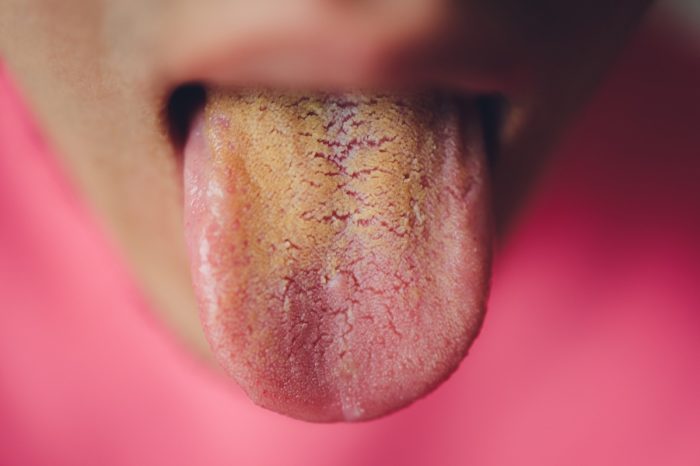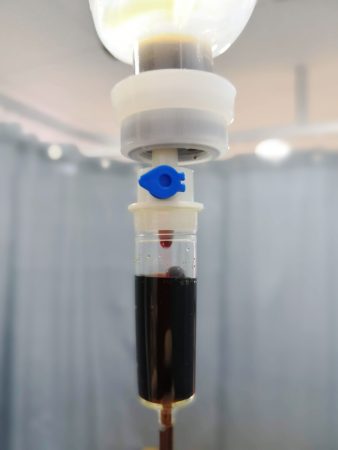
From the beginning of time humans have recognized the special role Iron has to play in our health.
Iron composes five percent of the earth’s crust, yet iron deficiency is THE most common type of mineral deficiency worldwide!
It is estimated that up to one in three people worldwide are low in this essential mineral.
What is Iron?
Iron is an essential mineral that your body needs for growth and development. It is Vital for providing energy for daily life.
the body uses iron to make haemoglobin, a protein in red blood cells that carries oxygen from the lungs to all parts of the body and myoglobin, a protein that provides oxygen to muscles.
Many enzymes throughout the body contain iron, including those involved in energy production. Additionally, proper functioning of the immune system relies in part on sufficient iron.
Insufficient levels of iron will result in your body not being able to produce enough haemoglobin. Consequently, there will be a lack of adequate healthy red blood cells, resulting in your muscles and tissues not getting enough oxygen to work effectively.
This sequence of events is known as Iron Deficiency Anaemia, which is the most common type of anaemia globally.
Causes of Low Iron levels
In adults, some of the common causes of iron deficiency include:
- Not getting enough iron in your diet (also known as ‘inadequate dietary intake’). There are many reasons why someone’s dietary intake of iron could be too low, for example due to a poorly balanced vegetarian diet, chronic fad dieting or having limited access to a wide range of fresh foods.
- Blood loss – iron deficiency easily occurs in situations of chronic (ongoing) blood loss. Common causes include heavy menstrual periods, regular blood donation, other chronic conditions that involve bleeding (such as peptic ulcers, polyps or cancers in the large intestine), and certain medications, particularly aspirin.
- Increased need for iron – if you are pregnant or breastfeeding your body needs more iron. If this increased need isn’t met, iron deficiency can quickly occur.
- Exercise – athletes are prone to iron deficiency because regular exercise increases the body’s need for iron in several ways. For example, hard training promotes red blood cell production (which requires iron), and iron is lost through sweating.
- Inability to absorb iron – healthy adults absorb about 10 to 15% of dietary iron, but some people’s bodies are unable to absorb or use iron from food.
Symptoms of low Iron
Unusual Tiredness
Feeling very tired is one of the most common symptoms of iron deficiency anaemia. This symptom is also common in people who simply don’t have enough iron, even if they haven’t received a diagnosis of deficiency.
This fatigue happens because your body lacks the iron it needs to make a protein called haemoglobin, which helps carry oxygen around your body.
Without enough haemoglobin, less oxygen reaches your tissues and muscles, depriving them of energy. Your heart also must work harder to move more oxygen-rich blood around your body, which can make you feel tired.
Tiredness related to iron deficiency may go hand in hand with weakness, irritability, or difficulty concentrating.

Skin that’s Paler than Usual
Skin that’s paler than usual, as well as pale colouring of the inside of the lower eyelids, are other common symptoms of iron deficiency.
The haemoglobin in red blood cells gives blood its red colour, so low levels caused by iron deficiency make the blood less red. That’s why skin can lose some of its colour or warmth in people with iron deficiency.
Paleness associated with iron deficiency may appear all over the body or be limited to one area, such as the:
· Face
· Gums
· Insides of lips or lower eyelids
· Nails
Shortness of Breath
Haemoglobin enables your red blood cells to carry oxygen around your body.
When Haemoglobin levels are low during iron deficiency, oxygen levels are likewise low. This means that your muscles won’t receive enough oxygen to do normal activities, such as walking.
As a result, your breathing rate will increase as your body tries to get more oxygen. This is why shortness of breath is a common symptom.
If you find yourself out of breath when doing daily tasks that you used to find easy, such as walking, climbing stairs, or working out, iron deficiency may be to blame
Headaches
Iron deficiency may cause headaches, particularly in those who are menstruating.
Heart Palpitations
Noticeable heartbeats, also known as heart palpitations, are another symptom of iron deficiency anaemia.
The association between iron deficiency, anaemia, and heart problems is still being studied, but it may be related to oxygen supply. Haemoglobin is the protein in red blood cells that helps transport oxygen around your body. In iron deficiency, low levels of haemoglobin mean the heart has to work extra hard to carry oxygen.
This may lead to irregular heartbeats or the feeling that your heart is beating abnormally fast. Consequently, iron deficiency may worsen conditions that affect your heart, such as heart failure and coronary heart disease.
Dry and Damaged Hair and Skin
Dry or damaged skin and hair may be signs of iron deficiency. Iron deficiency lowers the level of haemoglobin in your blood, which may reduce the amount of oxygen available to cells that cause hair growth.
When skin and hair are deprived of oxygen, they may become dry and weak. Iron deficiency is also associated with hair loss. It’s completely typical for some hair to fall out during everyday washing and brushing. However, if you’re losing clumps or large amounts, it may be related to iron deficiency.

Swelling or Soreness of your Tongue or Mouth
Sometimes, the inside or outside of your mouth indicates whether you have iron deficiency anaemia. Signs include a swollen, inflamed, pale, or strangely smooth tongue.
Iron deficiency may also cause other symptoms around your mouth, such as:
- Dry mouth
- A burning feeling in your mouth
- Sore, red cracks at the corners of your mouth
- Mouth ulcers

Restless legs
Iron deficiency has been linked to restless legs syndrome. This condition involves a strong urge to move your legs while they’re at rest. It may also cause unpleasant crawling or itching sensations in your feet and legs. It’s usually worse at night, meaning that you may find it difficult to sleep.
The causes of primary restless leg syndrome are not fully understood. However, it’s known to occur secondary to various medical conditions, including iron deficiency anaemia.
Indeed, people with iron deficiency anaemia are 6 times more likely to have restless leg syndrome than the general population.
Brittle or Spoon-Shaped Fingernails
A symptom of iron deficiency is brittle or spoon-shaped fingernails. This condition is called koilonychia.
Usually, the first sign is brittle nails that chip and crack easily. In later stages of iron deficiency, spoon-shaped nails may occur, meaning that the middle of your nail dips and the edges raise to give a rounded appearance like a spoon.
Strange Cravings
A hankering for strange foods or non-food items is called pica. It usually involves cravings to eat ice, clay, dirt, chalk, or paper, and it may be a sign of iron deficiency.
Feeling of Depression
Iron deficiency anaemia may be associated with depression in adults. Pregnant individuals with iron deficiency may also have a higher risk of depression.
Cold Hands and Feet
Iron deficiency means less oxygen delivery to your hands and feet. Some people may feel the cold more easily in general or experience cold hands and feet.
More Frequent Infections
Because iron is needed for a healthy immune system, lack of it may increase your risk of infections.
Poor Appetite
Iron deficiency is associated with a poor appetite due to changes in the hunger hormone ghrelin.

What are Intravenous Iron Infusions?
An iron infusion is a medical procedure designed to address iron deficiency anemia, a condition characterized by insufficient iron levels in the body, leading to low red blood cell count.
Iron plays a critical role in hemoglobin production, which is responsible for transporting oxygen in the blood. When the body lacks iron, it can result in fatigue, weakness, and various other symptoms.
During the iron infusion process, healthcare professionals administer iron directly into the bloodstream through an intravenous (IV) line. Typically, iron is provided in the form of iron salts or iron complexes, allowing for rapid absorption into the bloodstream and a swift increase in iron levels.
Although generally considered safe, the procedure necessitates careful monitoring to avoid any potential adverse reactions. The number of infusions required may vary depending on the severity of the anemia, and patients might need multiple sessions over time to replenish iron stores and enhance overall health and well-being.
Prior to undergoing an iron infusion, patients often undergo blood tests to confirm iron deficiency and determine the appropriate dosage. It is crucial for patients to inform healthcare providers about any allergies or medical conditions to ensure the procedure’s safety and efficacy.
Overall, an iron infusion is regarded as an effective and efficient treatment for iron deficiency anemia, offering relief from symptoms and promoting improved energy levels in individuals affected by this condition.

How do I Increase my Body's Iron Levels Quickly?
Oral Iron Supplement
Conventionally, iron deficiency is treated with oral iron supplements, with tablets being the most common form used. Frustratingly, many people find taking these daily not practical for a number of reasons.
Remembering to take up to 3 tablets daily for months and finding the time to take them properly (it is advised to take them on an empty stomach one hour before a meal with a drink containing vitamin C) can be next to impossible.
Furthermore, the side effects experienced by many people taking oral supplements can be extremely unpleasant. Common side effects experienced with oral supplements include:
- Nausea and vomiting
- Stomach discomfort / heartburn
- Reduced appetite
- Constipation
- Diarrhoea
- Dark or black stools
- Black stained teeth – from liquid form
The above side effects, alongside the method of taking the supplements, make it both impractical and intolerable to take oral iron medication regularly.
This is before we even consider the reduced bioavailability of oral supplements (ie only 20-30% absorption).
Iron Drips
At Vitamin Suite we provide Iron drips that boost your total body iron levels immediately without any of the awful side effects of oral iron. We offer a range of doses of iron, with our doctor being able to advise you on the appropriate dosage for your individual need.
We can combine the iron infusion with a high dose of vitamin C which would further boost your Iron stores. Please discuss this with the doctor at the time of your consultation whether you would be suitable for this combination treatment.
How much does an Iron Drip Cost?
At the VitaminSuite we offer a range of different concentrations of Iron. Usually after a consultation with the patient the doctor is able to suggest what concentration is most suitable for each individuals needs.
Our Prices are listed Below.
- 100mg – £125
- 500mg – £22
- 1000mg – £400.
How do I Book in?
If you are suffering from low iron levels Please feel free to contact us using out ‘Contact Us‘ page or call us at 0333 772 1630.




